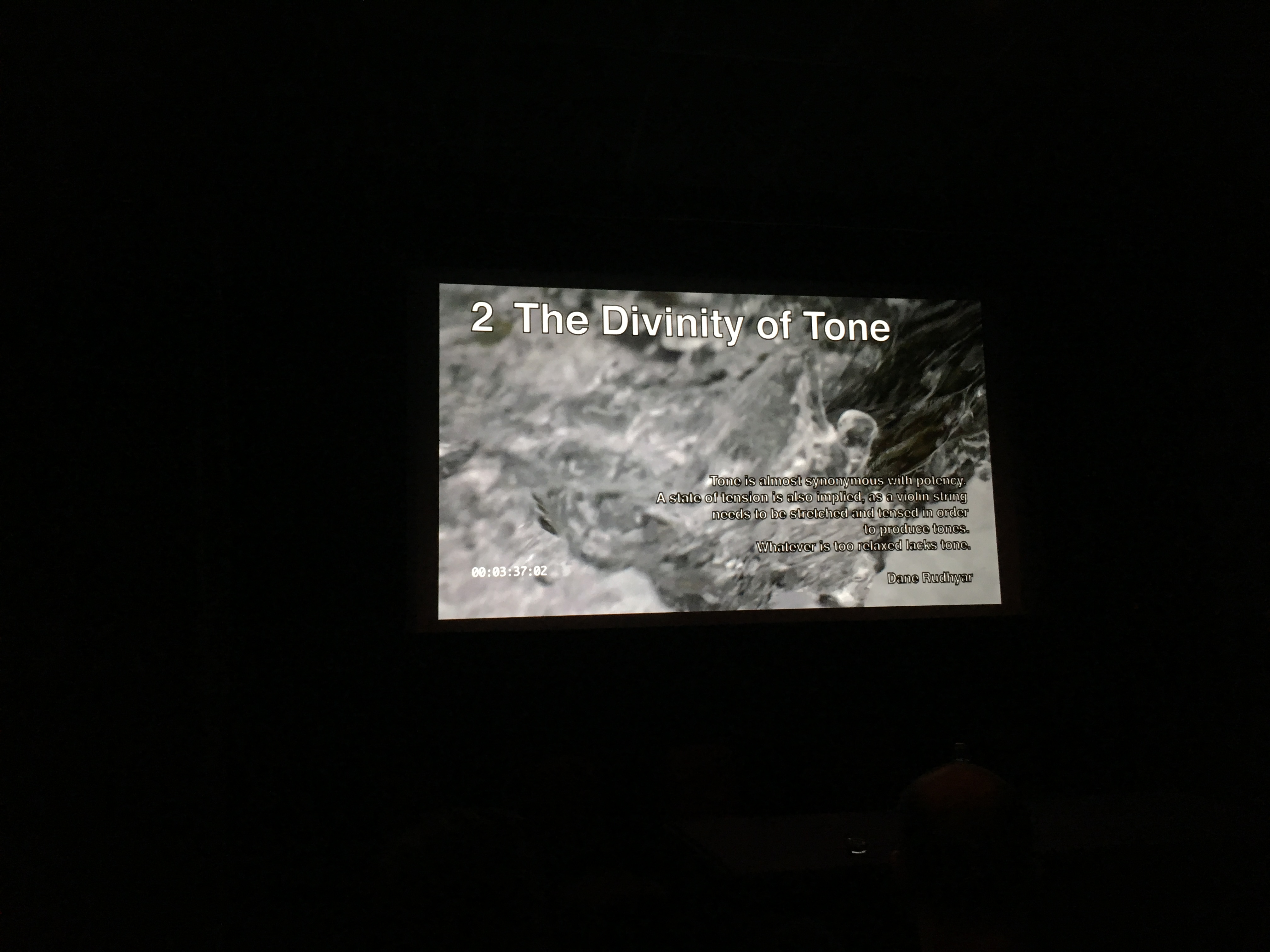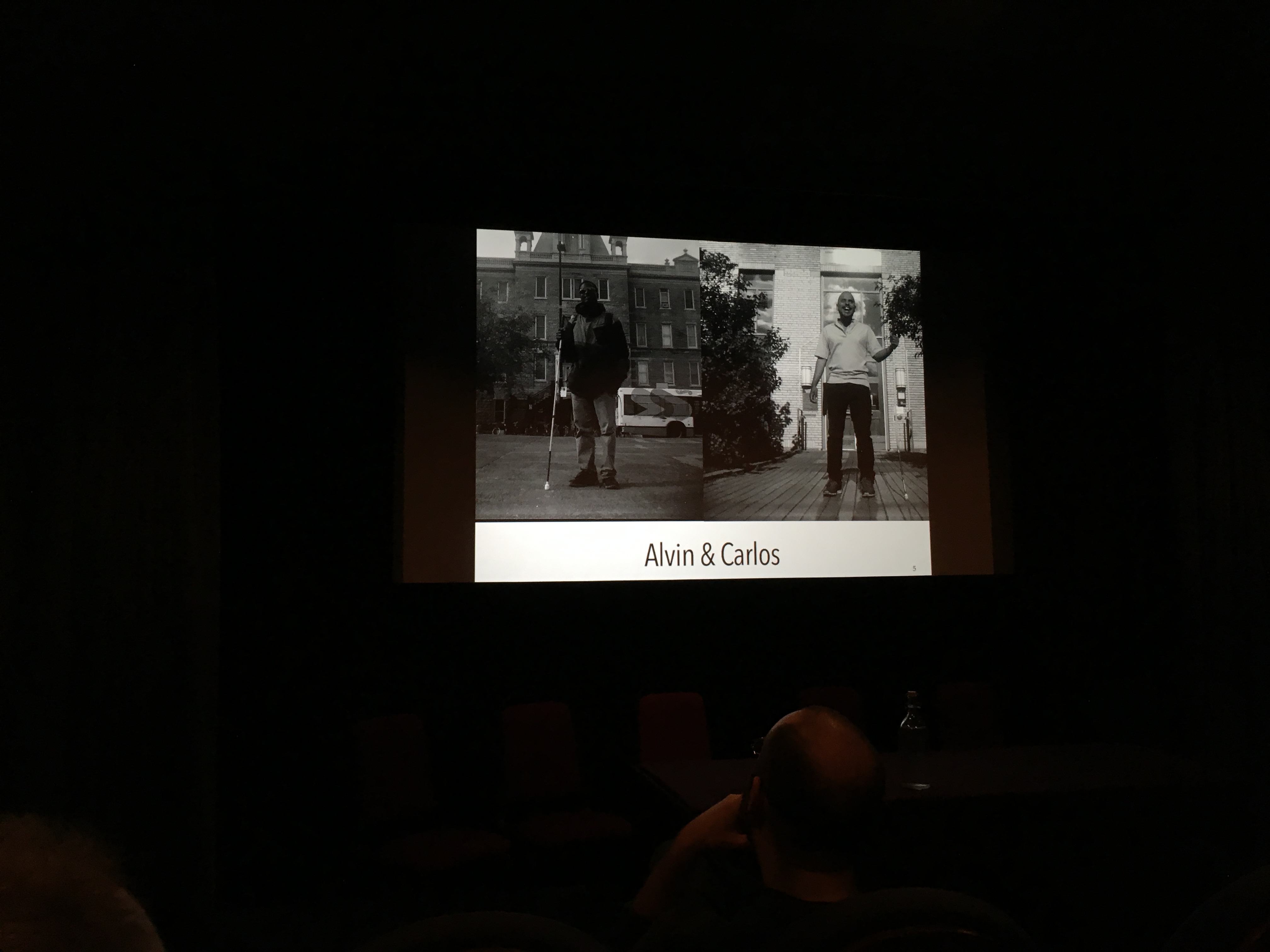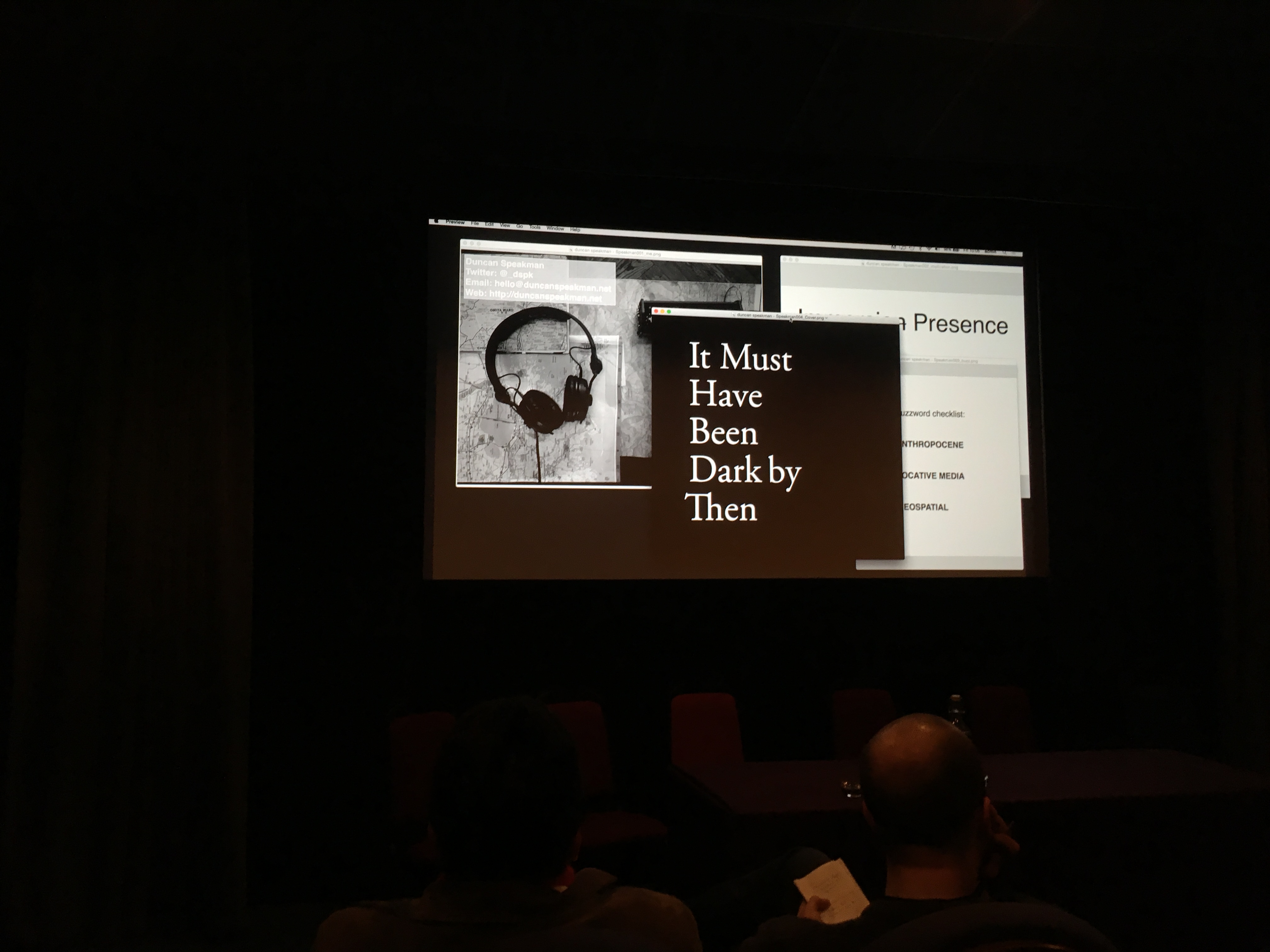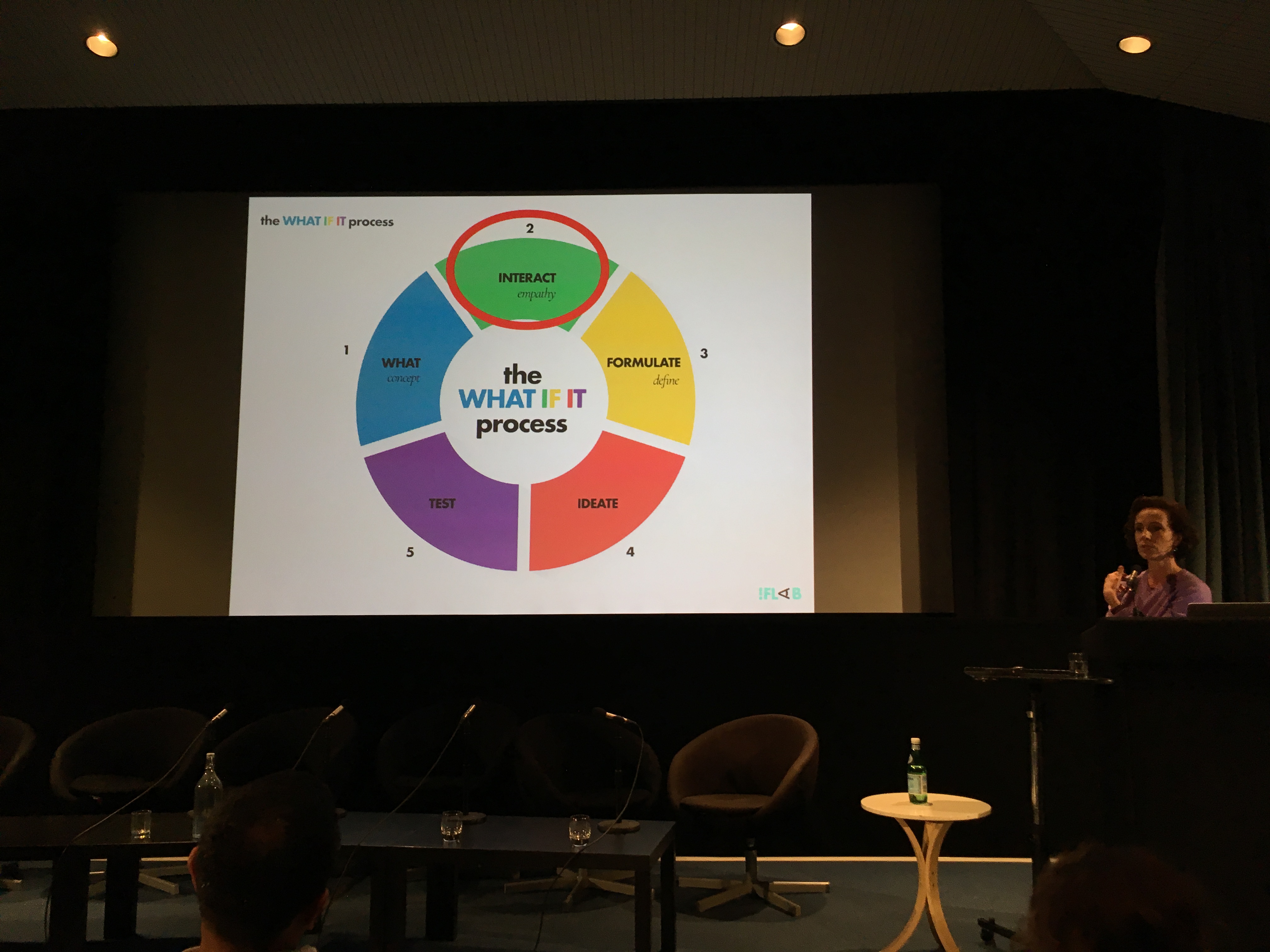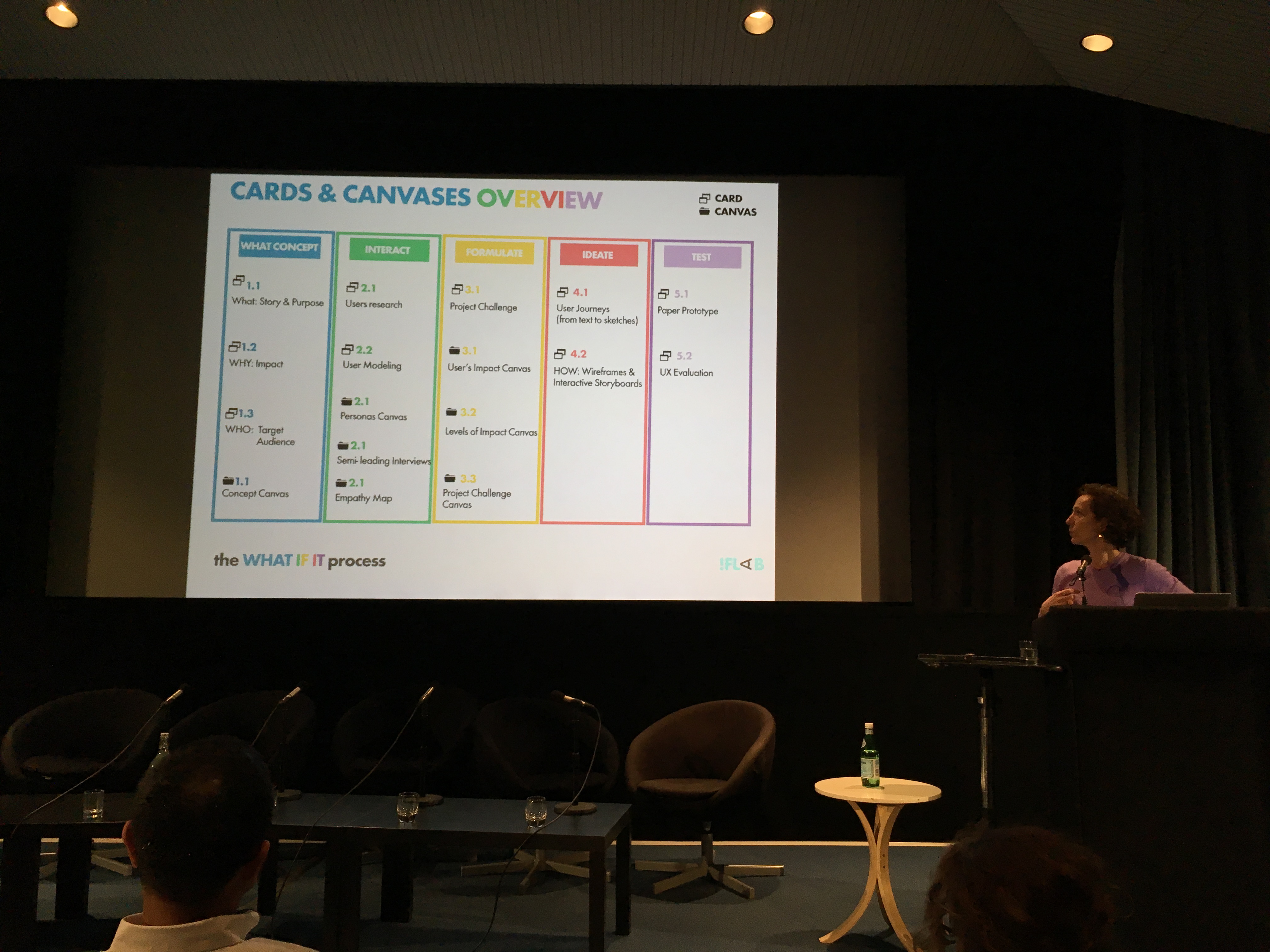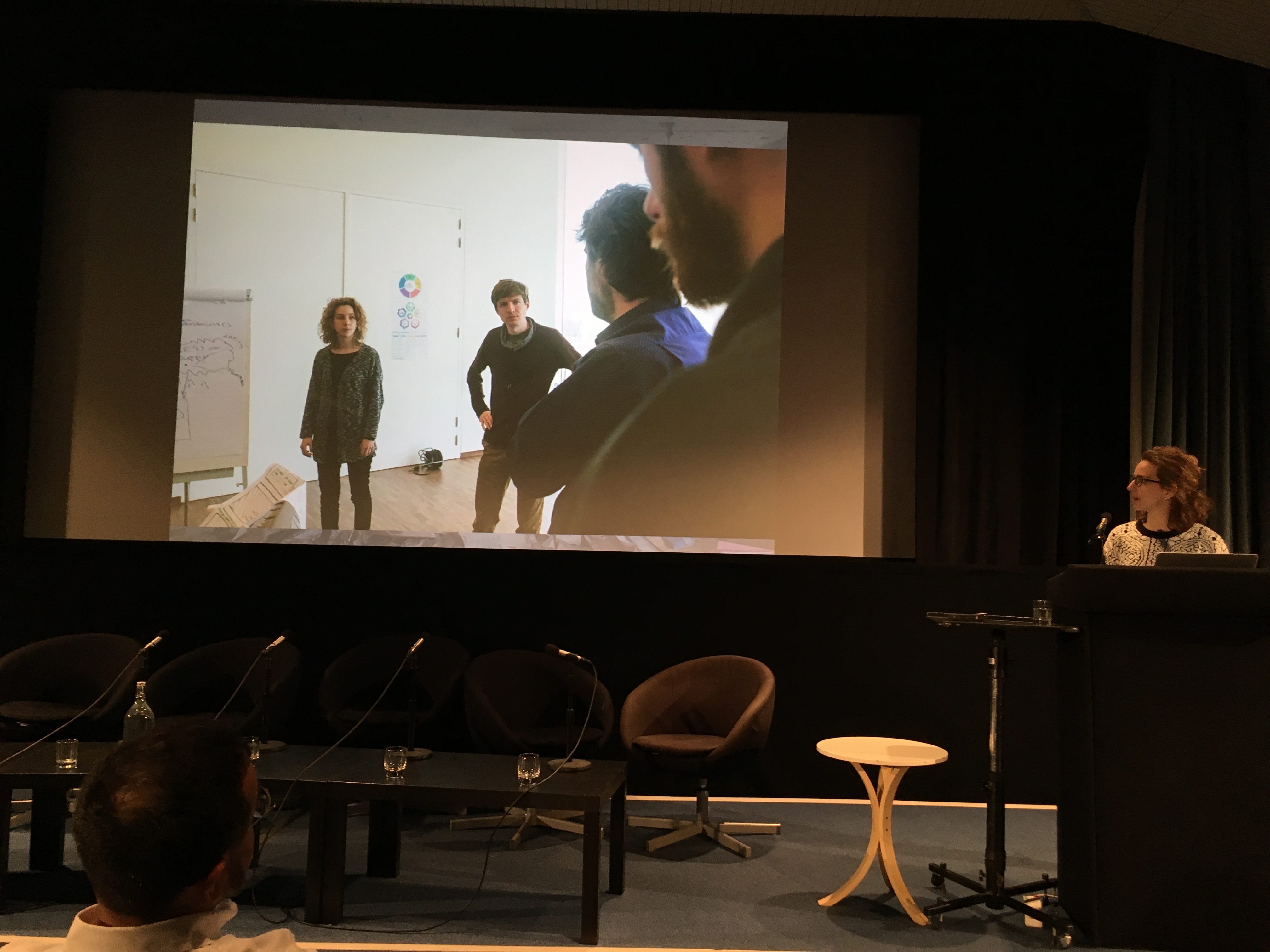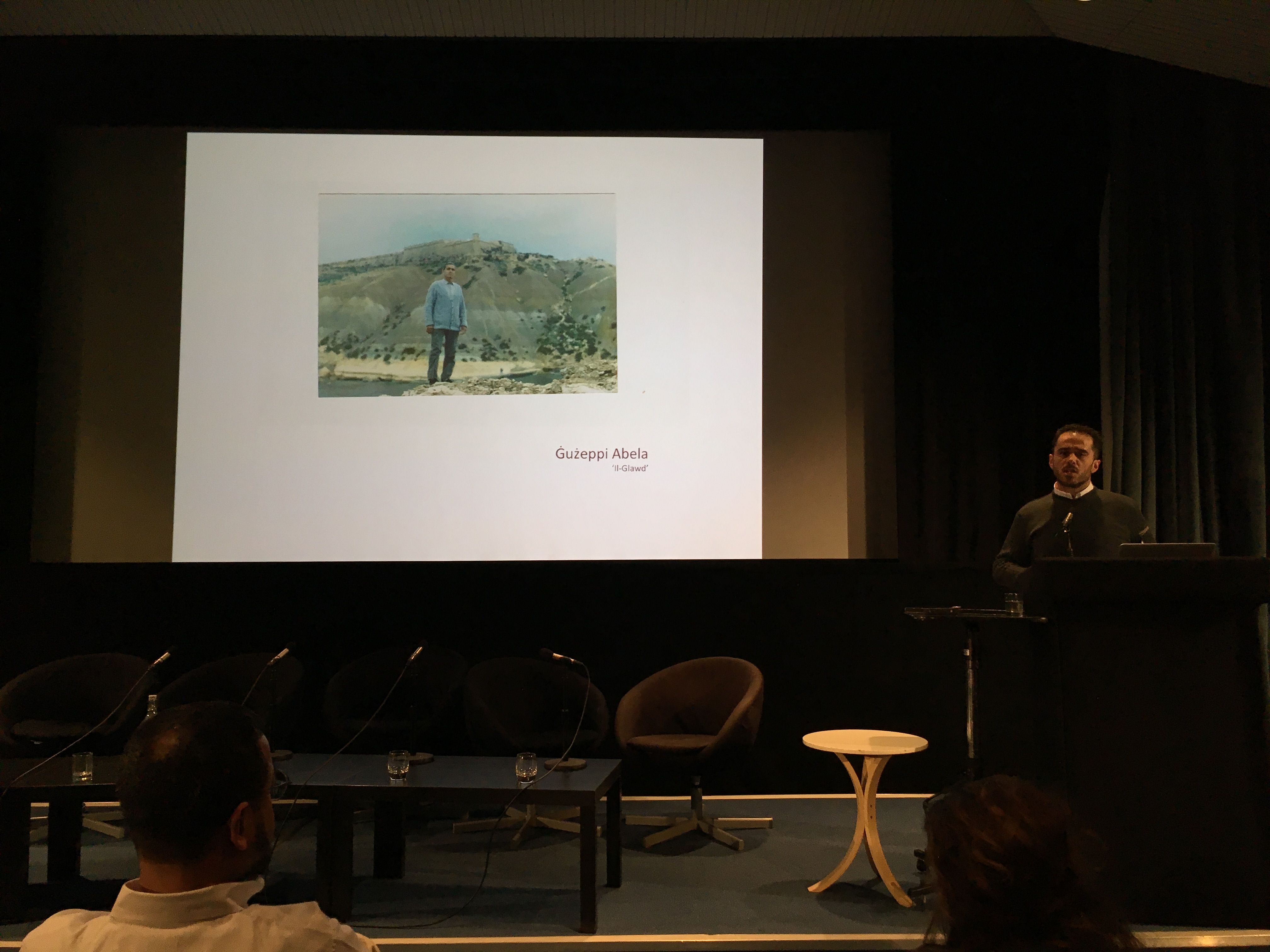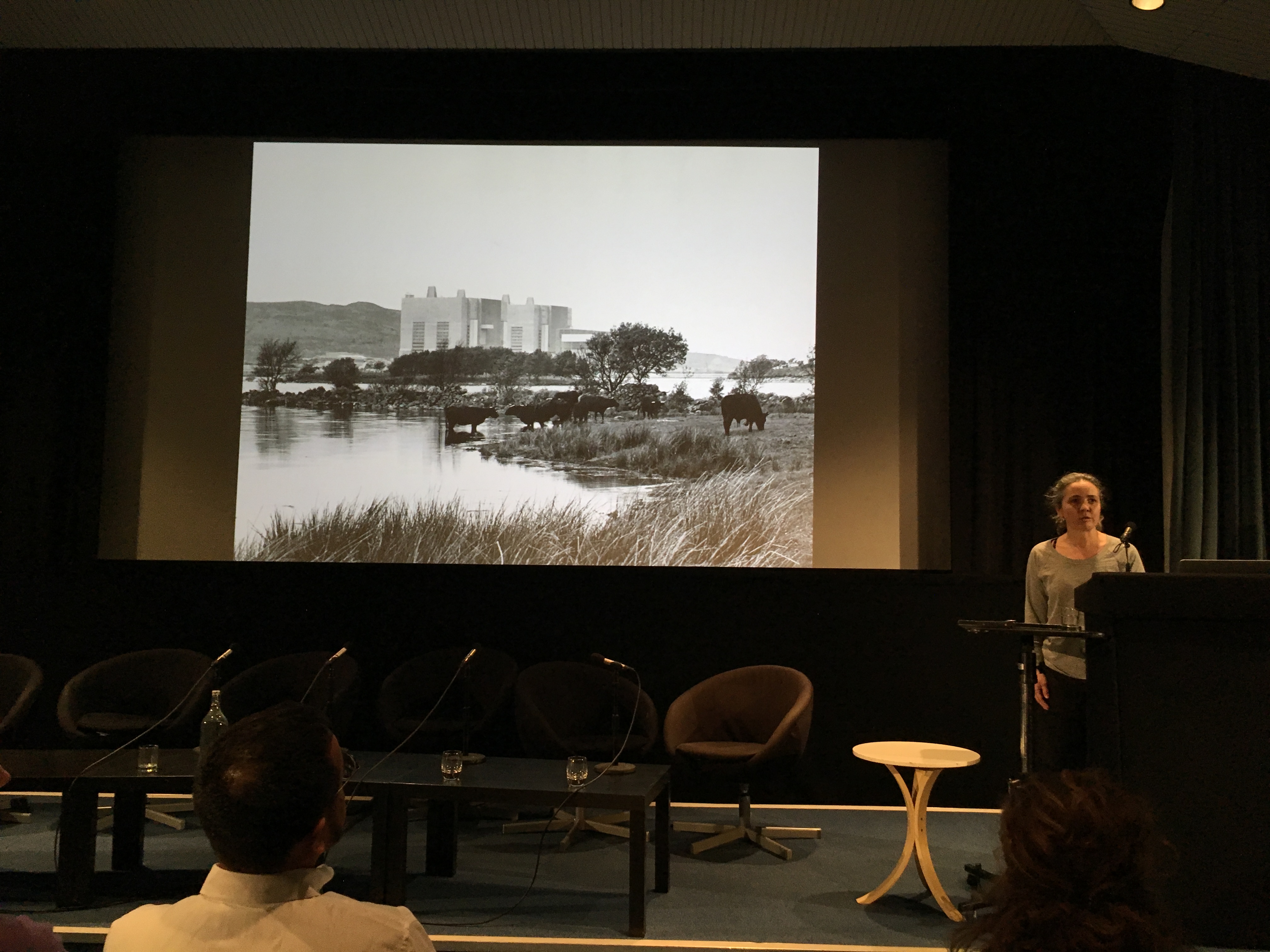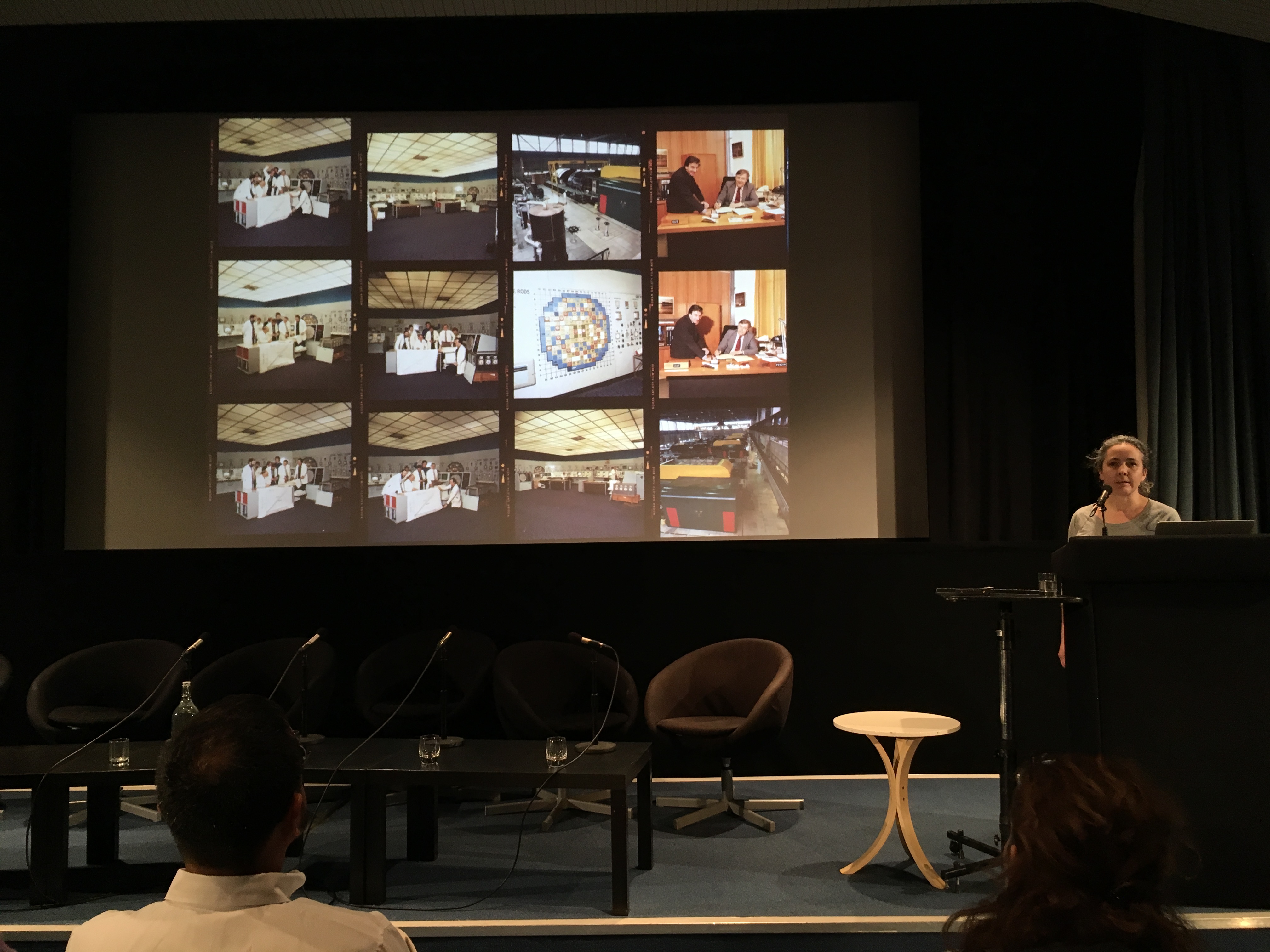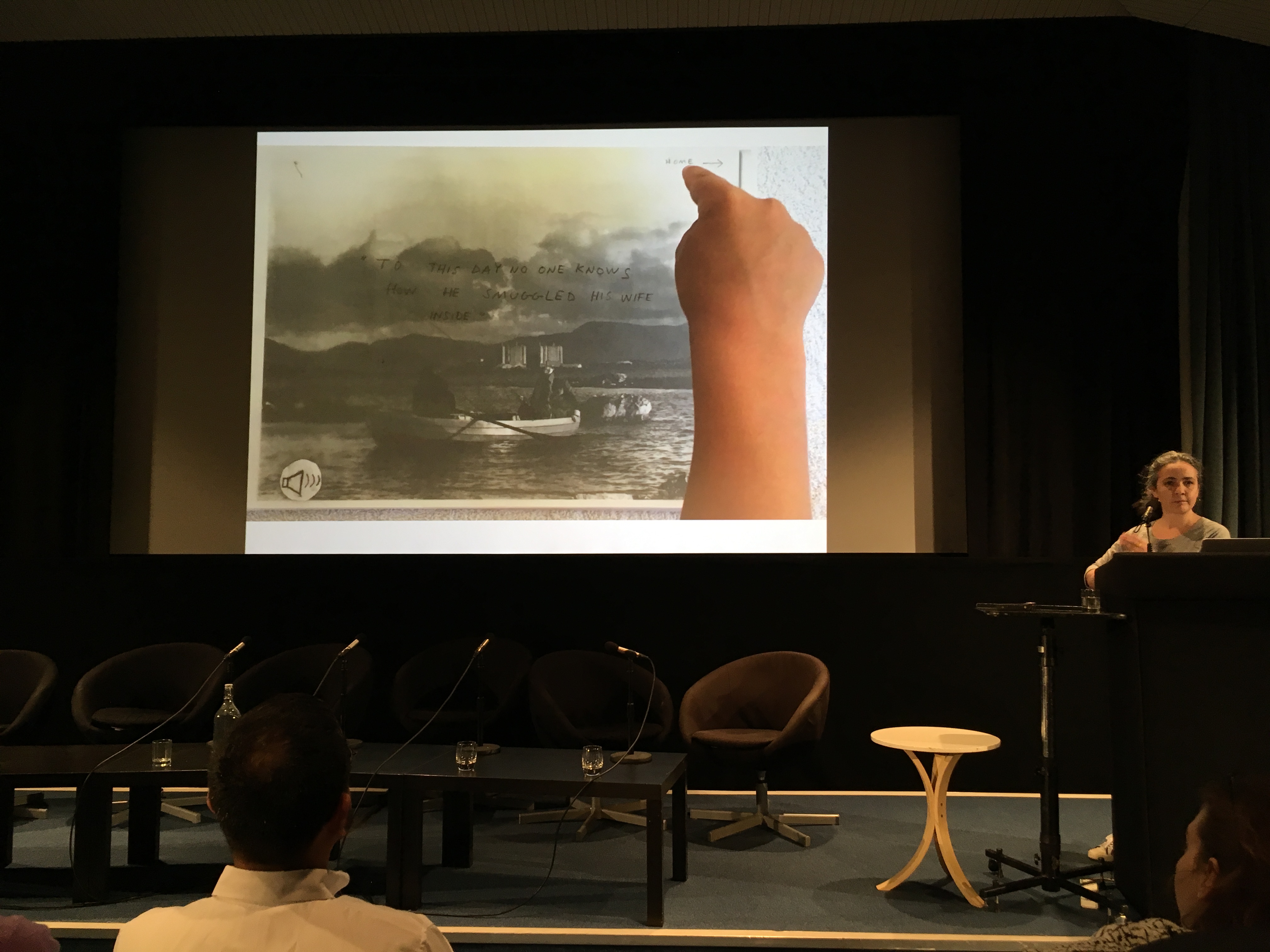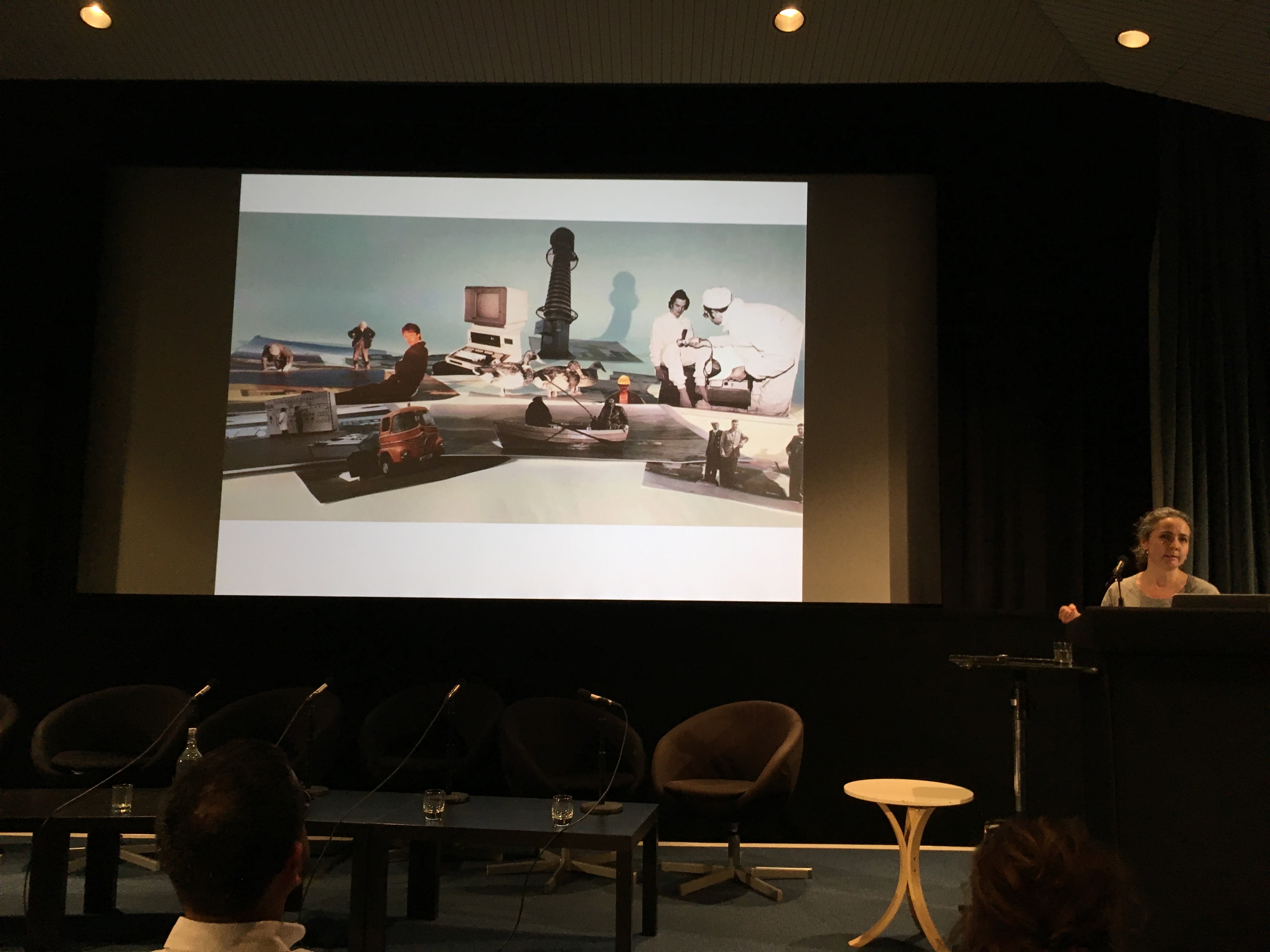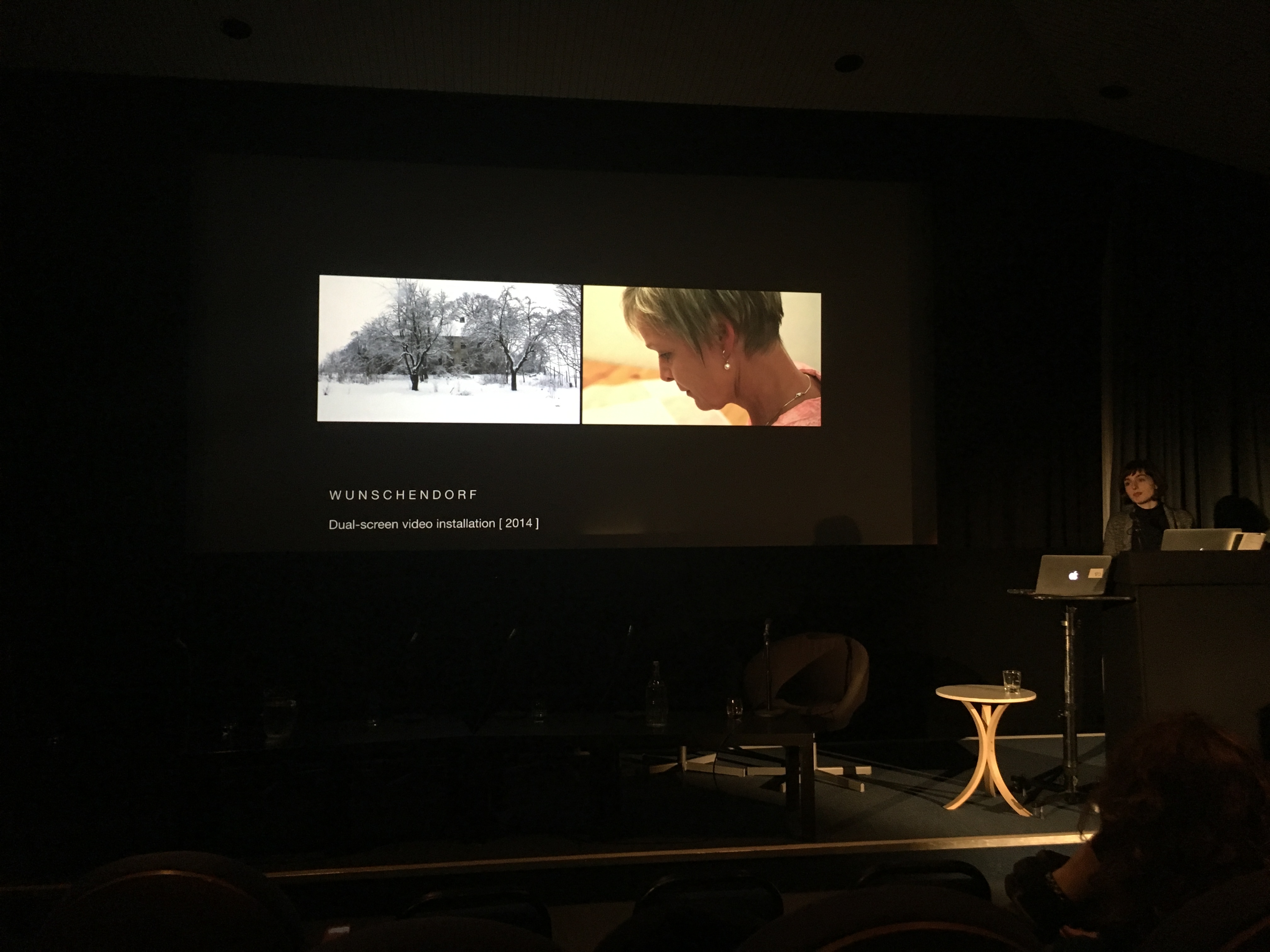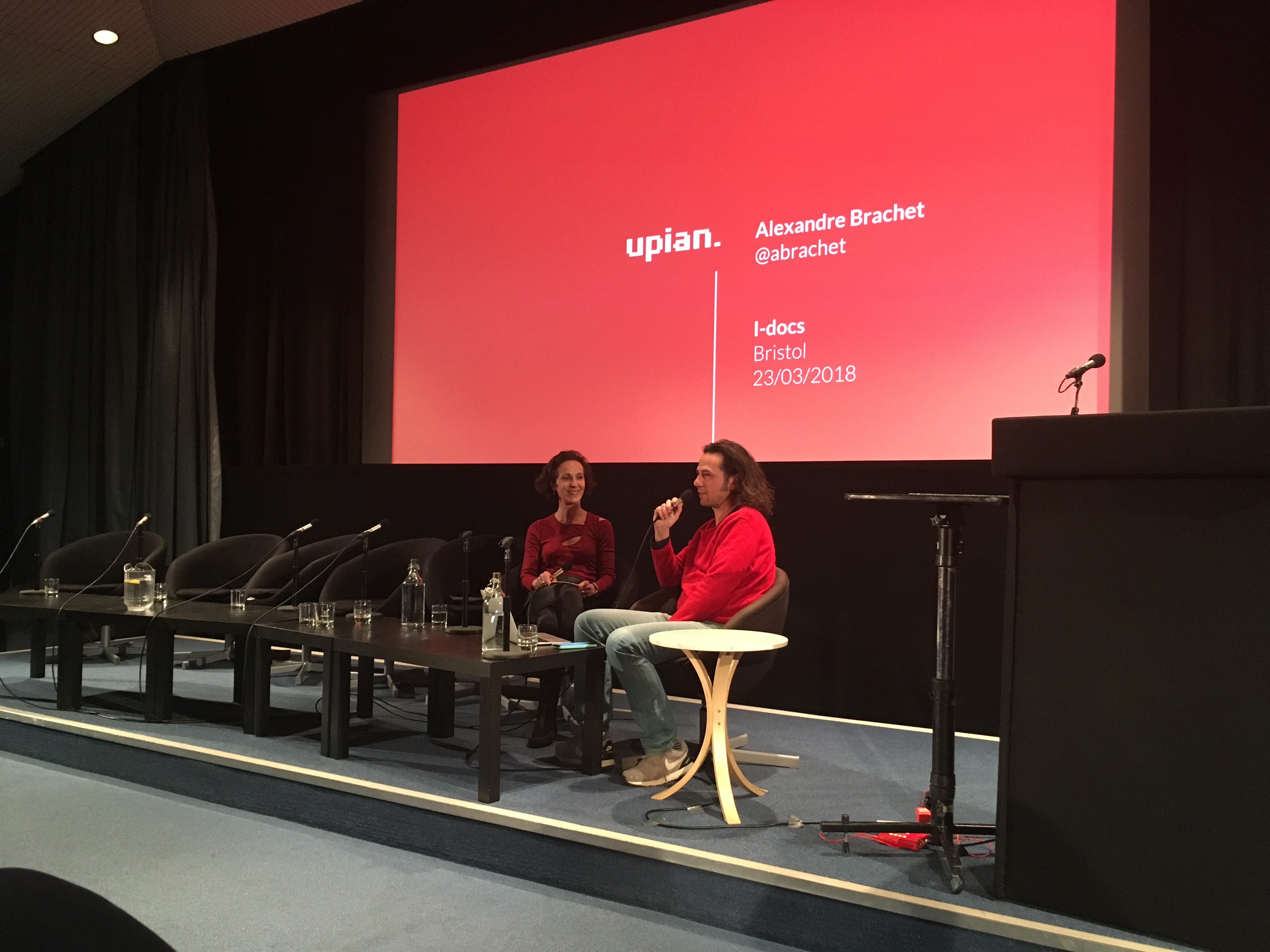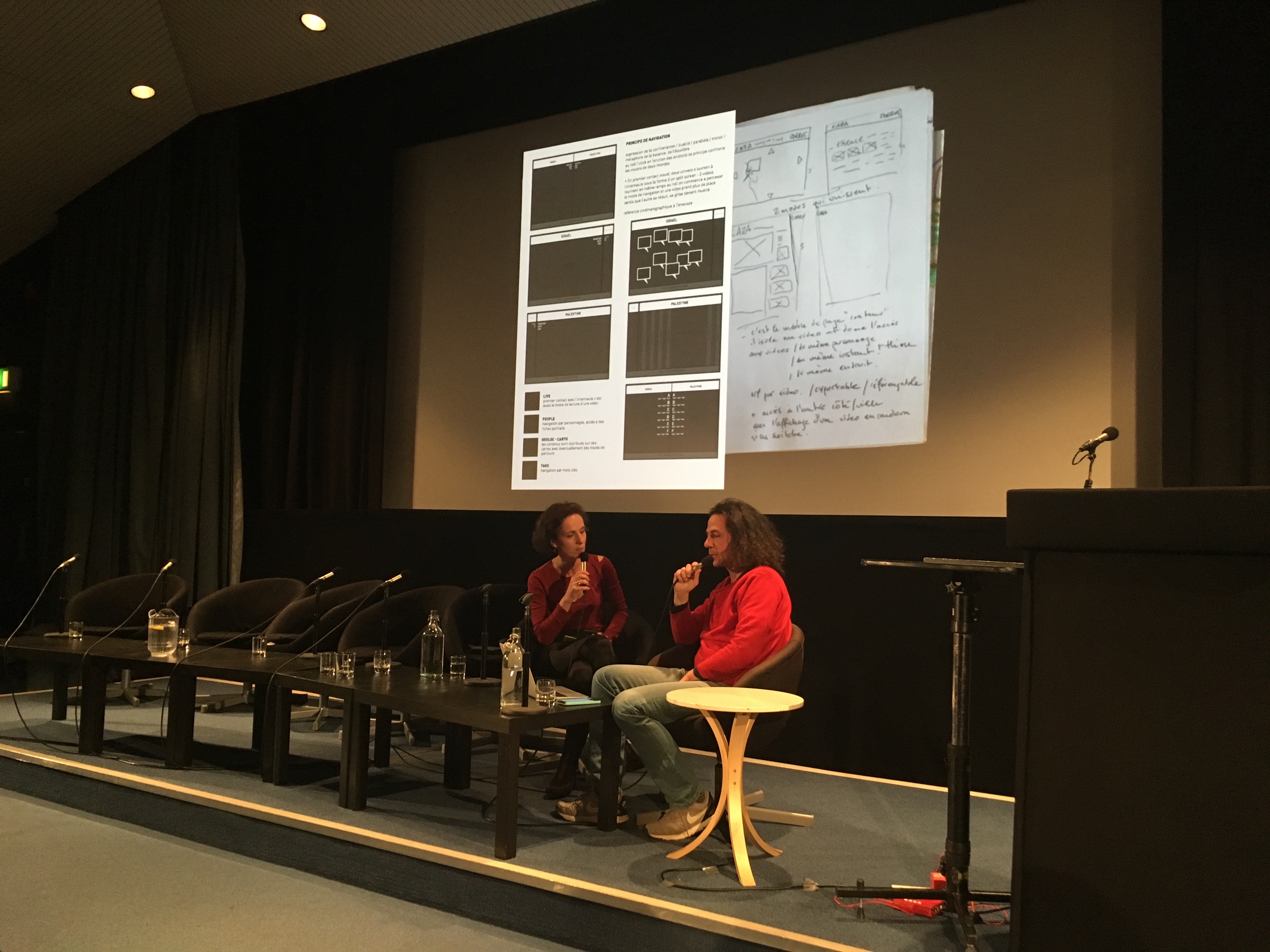iDocs 2018 day 3 conference notes
These are my day 3 (Friday 23 March) notes for iDocs 2018, a three day event dedicated to the expanding & evolving field of interactive documentary, in Bristol.
Immersive Audioscapes
Julian Konczak – Tracing Transcendental Tone: work in progress
Andrea Diaz – How to create a story-world about Carlos & Alvin?
Duncan Speakman – It Must Have Been Dark by Then
Julian Konczak
Work centers around the hidden and powerful effects of sacred sound. (i.e. how do you create intended transcendental experiences with digital)
Pythagoras was interested in the ability to sound to push people into a more sacred space
This psycho-acoustic element has been revisited more recently: La Mont Young and drone choreography
Haunted Media: Media Archaeology and the idea that there is something going on (more esotheric and more etheric than what appears on the surface)
How to deal with multiplicity of platforms and atomisation of audience experinece?
Andrea Diaz
How to create a story-world about Carlos & Alvin?
Carlos and Alvin are both blind. Carlos: from Colombia, 34 years old, lives in Montreal. Works as a translator. grew up in an environment where he was given a lot of freedom and independence to explore as a child
Alvin: from the Bahamas, 32 years old. Also in Montreal. Grew up in an orphanage so was not allowed to be free and independent as a child - was given a cane very early on.
Carlos and Alvin met up. they’re both immigrants in their 30s in Montreal; they’re both premature babies and became blind because of the same medical error. They use the practice of echolocation to navigate
Could someone who is not blind learn the ‘space as a sound language’ (echolocation)
Was really hard - even if understood the theory, could not do it in practice.
So started by putting a 360 camera on a helmet for them to wear, and asked them to describe their process as they walked around the city.
It was interesting, but the video was basically awful. So decided to try again in a controlled environment. Chose Alvin’s apartment to try this.
Put the film into an HTC Vive
Very excited to to make it, but when people tried it… they felt dizziness and couldn’t continue
Decided to solve this by giving two versions of the same video - a stabilised version and Alvin’s original version.
Sound: Originally, had different layers - Voice narration, sound effects, ambient sound etc
Invited Carlos to come - ironic because we had to put the headset on him in order to help him understand VR and 3d digital images and all that.
Validated the audioscape with him. Carlos’s reactionw as: Oh that’s nice, but when are you going to have the whole sound of the room?’ - he means reverb, and ambisonics (full, uninterrupted sphere of sound recorded with a 360 mic)
What’s next: Really want ot have a visualisation of the sound wave in the VR experience - because, otherwise it’s so easy to disassociate.
How do we archive our soundscapes?
Duncan Speakman - It Must Have Been Dark by Then
More info about It Must Have Been Dark By Then
Don’t like the term ‘immersion’ because when working about sound it’s always immersive. Instead prefers ‘presence’
Implication and Imbrication - overlapping of edges
Anthropocene, Locative Media, Geospatial
What’s interesting and somewhat problematic is this relation between text and sound. when you are reading there’s no temporality to it - you read
You have this situation where your reading pace is framed by the audio - sometimes people get frustrated by it because they think they are ahead or behind
Really interested by this idea of giving time frames to printed objects
The reflections acts as a silencing of the world. It almost removes you from the space. It leaves you that time to contemplate the world around you.
Attempts to connect the ‘gameplay’ (of walking around) with the original text. In Douz, for example, people were not given a choice and
Things the work addresses:
The idea of layered experieneces. On journey out you are choosing places with your head down in the book. On way back, those things become layered. You remember being there half hour ago, but also you remember the story you have read.
Anthroprocene: Problem is that we understand it (and it has been framed)through modes of the visual.
Kanngeiser, 2015
Davis H & Turpin E: Art in the Antrhopocene
The layering of time - Shadowtime. A parallel
This is augmented reality. This is not trying to create a fiction. (wanted to emphasise that the recording shows things actually happening and how it connects of where you are and what you are doing)
Next stage is to use microphones on the headphones. This allows blending in on live, real-time audio with pre-recorded. So, sound of wind in Bristol could blend into sound of wind in Tunisia.
Starting from here and starting from where you are right now, and to work outward to other places.
Challenge with interactive work: If you have something to say, why let (make?) the player say it for you?
The ‘What If It’ project
Should we follow a specific methodology when producing an i-doc? What does that look like?
Work of the IF lab is to mix methodologies from multiple disciplines: storytelling, design, programming, etc
The process:
Makers are guided through this by cards:
And canvases:
However, more interested in exploring these questions: Is this empowering or limiting? Is this the right mix of methodologies? How do we improve on this?
The Forgotten War
Originally: knew that we wanted to do a documentary on the war in Eastern Ukraine from the locals’ perspecive, and to do it in a non-linear way.
When we started at iFLab, the first question was ‘why’. This was surprising to us because we cared so much about the issue.
This is how we reacted:
But this pushed us to ask ‘how do we engage with the audience?’ Led to adding a main character and who the audience is in the story.
After raised funds and scouted in Ukraine, the ‘Why’ questions came up again. This time they were more radical: Why not VR, why not Instagram? Led us to a very paranoid and schizophrenic state of mind because they could be right but so could we.
Went back to original core of the project and our motivations for doing it.
Reading diaries
What is the experience and process of reading diaries? It’s not a book and it doesn’t necessarily happen linearly. There’s also the tactile and place etc (imbrication?)
Project centers around this guy and his diaries:
What I’m doing is effectively looking at these diaries as a basis for my storytelling.
There is a story that’s almost pre-packed there and all it takes is a bit of organising.
Joanna Wright - Atomfa
Atomfa: Welsh colloquial word for nuclear power station.
documents the decomissioning of the power station in Snowdonia national park
Given pretty unfettered access to documents:
The plan was to decommission, destroy the documents lock the nuclear power plant, and leave it for a hundred years or so for people in the future to deal with. “It’s a bit of an ‘Austin Powers’-type plan”
When came to iFLab, didn’t have a structure.
Tackled this with paper prototyping:
Also through interviewing people about their understanding of my project, which revealed the challenges that had to be overcome.
Aashish Kumar
Body | Home | World Queer Desi Journeys
Why interactive? wanted to bring together three diffrent sets of audiences:
-
Families
-
Queer identifying individuals
-
Activist or support orgs for queer identifying or their families
So, interactivity would allow an opportunity to create an environment similar to a ‘meeting square’ where the user could take multiple pathways to arrie at the same place
But lots of challenges and things to learn:
Need to have someone who has a design aesthetic that would be familiar both to someone in South Asia and someone in diaspora
Figure out what the navigation design would be.
Ambiguity about ‘interactivity’ and what’s it for.
Thinking through and addressing fluid funding priorities, which is shifting from interactivity to VR/AR
When you’re on the internet, the idea that you’re reflecting back where the user is in the journey and feeding that back to them is crucial.
Mike Robbins
People come with to !fLab with ideas but in between that and execution there is a big, wooly gap.
Design thinking is pretty new to the documentary field.
Who mentors the mentors? How do we learn and how do we learn?
Mixed Realities
Mike Robbins and Harmke Heezen – Rematerialism: About the importance of being there – an exploration of digital installations in physical surroundings
Sophie Dixon – Giving Presence to the Past
[Sorry - I missed the beginning of this session]
Rematerialism
Explores question of how immersive digital stories can fit into a real world setting
A model of the Great Synagogue in Aleppo, damaged in 1947, completely destroyed in 2016, in the Diaspora Museum in Tel Aviv. The idea is to put people inside the model, giving the sense of tangibility #idocs2018 pic.twitter.com/QDUkEIs4AC
— Lisa Gee (@LIS4G33) March 23, 2018
Want to encourage people to actually be there. Digitising shouldn’t be about “We’ve been to Machu Pichu and have scanned it and brought it to you in VR so you don’t have to go there”
VR works well in public spaces at the moment because there’s often more of a ritual and a contract/commitment involved.
Giving Presence to the Past
Sophie Dixon (@sophiedixon1) - More on her projects
Wunschendorf: it’s a place that is created through layers of stories, and changes with each visit, and wanted to recreate this for the viewer
How to do this? dual-screen installation
Using space as a means to expand fragments of narrative
Amassed archive of material - digital technology allowed people to encounter it in different ways.
Memory of Loci - HTC Vive experiment. Reconstructed fragment of house - only the parts that the interviewee remembers. The dark spaces and the empty spaces become just as important
The Chorus - wanted to address one missing aspect of Memory of Loci - polyphony
In The Chorus, viewer is on Hololens mixed reality; and surrounded by 4 plinths which represent different voices. There’s archival content (in hologram form) placed on the plinth.
Next experiment: How can you use mixed reality to bring to live heritage objects placed in a museum, which is often inanimate. i.e. a music box that could actually play music (in mixed reality)
Next experiment - Nomad: tackles issue of how when museum display objects, they do so within the museum context (i.e. object is taken out of and disassociated from its original use context). Could we use archival footage and material to recreate the scene of the object’s original use and ‘recontextualise’ it.
VR - a lot of the experience has to do with the moments before you put on the headset and after you take it off.
Stories and Interfaces 1998-2018
Alexandre Brachet in conversation
First time went online was 1994 when he was in university studying French literature. “It changed my life in a few minutes”. Went on Yahoo. Went home, told my father “I’m quitting university and doing the internet” (his dad was not impressed)
Early days of the internet there was a kind of counterculture - that sense drives me until now.
When he was around 25, he wanted to learn how to produce, and went to a French movie producer to learn. The roots of Upian is the mix between producing, and doing website like we do movies.
It was storytelling from the beginning.
First Uppian web doc was 2005. From 1998 to 2005: Very messy. Four years doing back-and-forth between activism and politics. We were known very quickly for doing interactive political cartoons. Doing brand and advertising work as well.
The bubble of 1999/2000 - became frustrated with how commercial and financial it was. Decided to quit and tried to work in Africa but it didn’t happen. Came back and it was the beginning 2002 French presidential election - create an online newspaper.presidnetial.net, that combined journalism, Entertainment/humour and services. It was beginning of online press. Big success for traffic. Big gathering place and a voice for activists.
2005 La Cite de Mort. Followed by Thanatorama. Went to CNC (french national centre for film) to ask for funding. La Cite de Mort made entirely on own budget; Thanatorama half
La Cite de Mort - first of the choose-your-own-adventure type documentaries. But instead of just asking ‘hey do you want to come along on this investigation about the prison-industrial complex’, which people might hesistate over, instead asks: ‘You died this morning; what do you want to do next?’’ So there is an intimacy and an immediacy
Gaza/Sderot - first piece where the interface is content. This was a key moment for us. First program where the documentary industry looked at the web and said ‘ok, we can do real documentaries’. The concept is synchronicity. No beginning, no end. A collection of shorts that make up the story.
We would not do the same today. We did Gaza/Sderot in 2005 at a moment of pause in the conflict. It is not possible anymore. We ended production Dec 24. December 25 and 26 were the nights of the most violent attacks ever. That’s why it’s emotional. We listened to people saying ‘it’s bad but it’s going to change’. But the change and the response was thousands of bombs and people dying.
Interface: At the time, many people were saying to us: ‘we don’t undersrtand what you are doing. Why? people can’t see all the movie, none of this makes sense, etc. It’s really weird - you give the user the control over how they consume your story?’ Ten years later, this is something that is totally normal today.
On the interface design: The most difficult is not to convince me, it’s to convince all the partners.
It’s complex. I think it was one of our big mistake to think that we could change the media landscape and the TV industry. Globally I don’t think the TV industry is going to be the partner for this kind of work. They are out of the game.
Prison Valley 2
Yes there’s the gamification part but for me the most important was the real time (mmo) aspect of it. We had character from movie chatting with audience Real time is something I believe in. You need something that connect with you directly
We do a lot around video games daily. You can love documentary and love video game at the same time.
It’s important to welcome people from games because they understand the world we live in.
Alma: this kind of story you come across once or twice in your life. If you have that you don’t mess with it. Maybe the most beautiful and best thing I’ve produced. Don’t need to do tricks on it. It was the most difficult thing I produced.
It’s a two level story. Two movie playing at the same time. You decide if you stay with her or escape. But if you escape you dont know what you will escape to.
In Alma. The story is that she did choices. Most of them were bad.
Alma was not an impact program for me. It was just a beautiful story
Do not track was definitely an impact program. Generation quoi was definitely an impact program
Generation What - a big, long survey. In 2013 if you do a good web program, people will use it. Also a moment for people to think about themselves - that for me is the most important moment. 1m people in Europe doing it.
The gift of the internet - for you to think about yourself and to share
Also a political statement about data - the layer of trust that we generated with them is a very powerful thing.
In France and Europe they trust public service. We launched in Arabic world - it’s more complex. It’s more difficult to bring the audience there when we launched with the public service.
Did Snapchat stories for l’Equipe
The cms for publishing on Snapchat is a tracking device. For the editors, it’s great because you can see exactly how people are interacting with what you produce.
The character of Uppian is our understanding of the internet. After 20 years, the danger is modernity. (need to reengage with fresh eyes)
Web doesn’t mean anything anymore. It’s kind of like an addiction now. Or like water. It’s part of human being.
Continue to do things we don’t know, take risks, and work with people in different fields and internationally.
Community of creative coders. Will go back to browsers. WebGL - it’s a new kind of pen.
Kamal Sinclair - Making a new reality
Making new reality - commissioned by JustFilms - Ford Foundation, supplemnted by sundanace institute
When started to 25-year veeterans of Ford foundation said: we were 25 years late with tv and all we got was PBS.
100 patents came out of Minority Report
Klip Collective; What’s he building in there?
Asked everyone 3 questions:
What is emerging media?
Examples: Evolution of Fearlessness - Lynette Wallworth: tactile nature of work - digital + touch
Interactive games etc. (i.e. 1979)
Goelocated storytelling. The National Mall / Hays & Ryan
Ephemeral media i.e. snapchat
Ambient data storytelling: Iyapo Repository. created, through a collaborative design project, a lantern that you can take through NYC and it lights up when you pass through a space where a black person was killed.
How we are becoming cyborgs.
Stranger Visions: Heather Dewey-Hagborg
T3511 - Heather’s next piece that interrogates the commodification of DNA
What is the zeitgeist of the emerging media?
Convergence, Connectivity, the nature of reality
What are your concerns around equality
have seen small interventions that have worked and have changed things
Hunger in Los Angeles - Nony de la Pena
Started to think about previous emerging media, and how it has a direct impact on how we see and perform our identity
This isn’t altruistic, it’s self-preservation
Need to re-tell the story of inclusivity to be about abundance rather than scarcity - which leads to people operating from a position of fear and loss.
